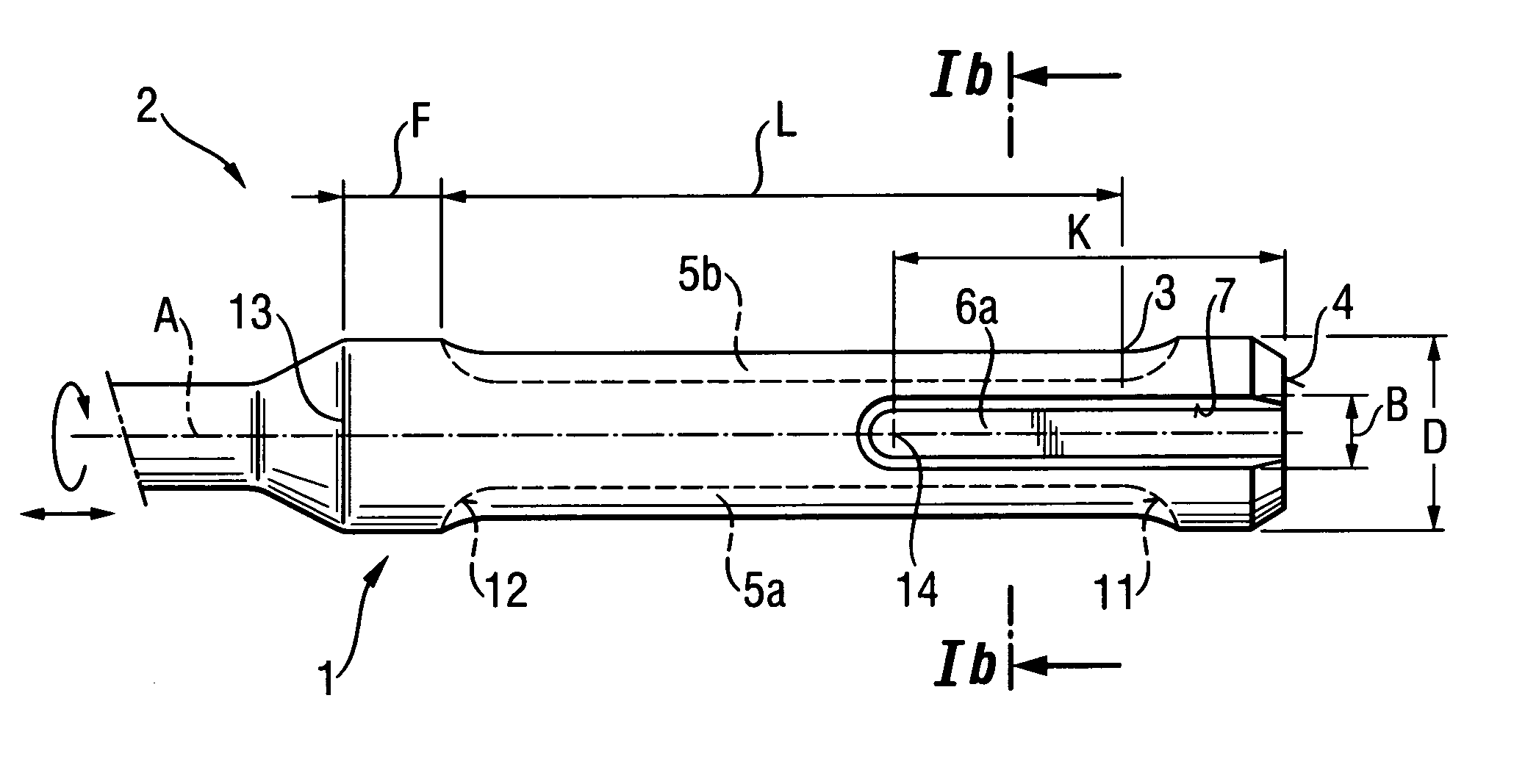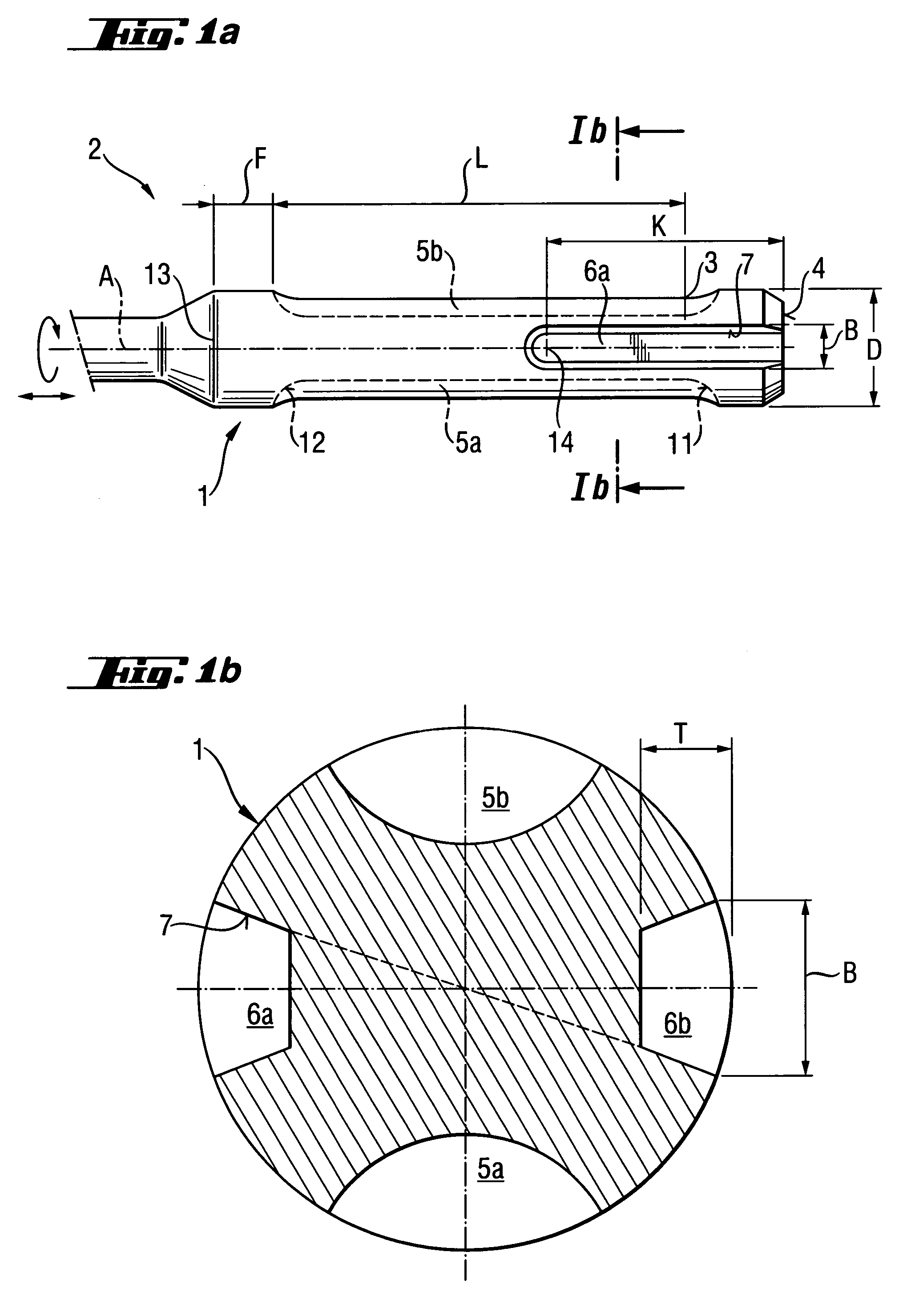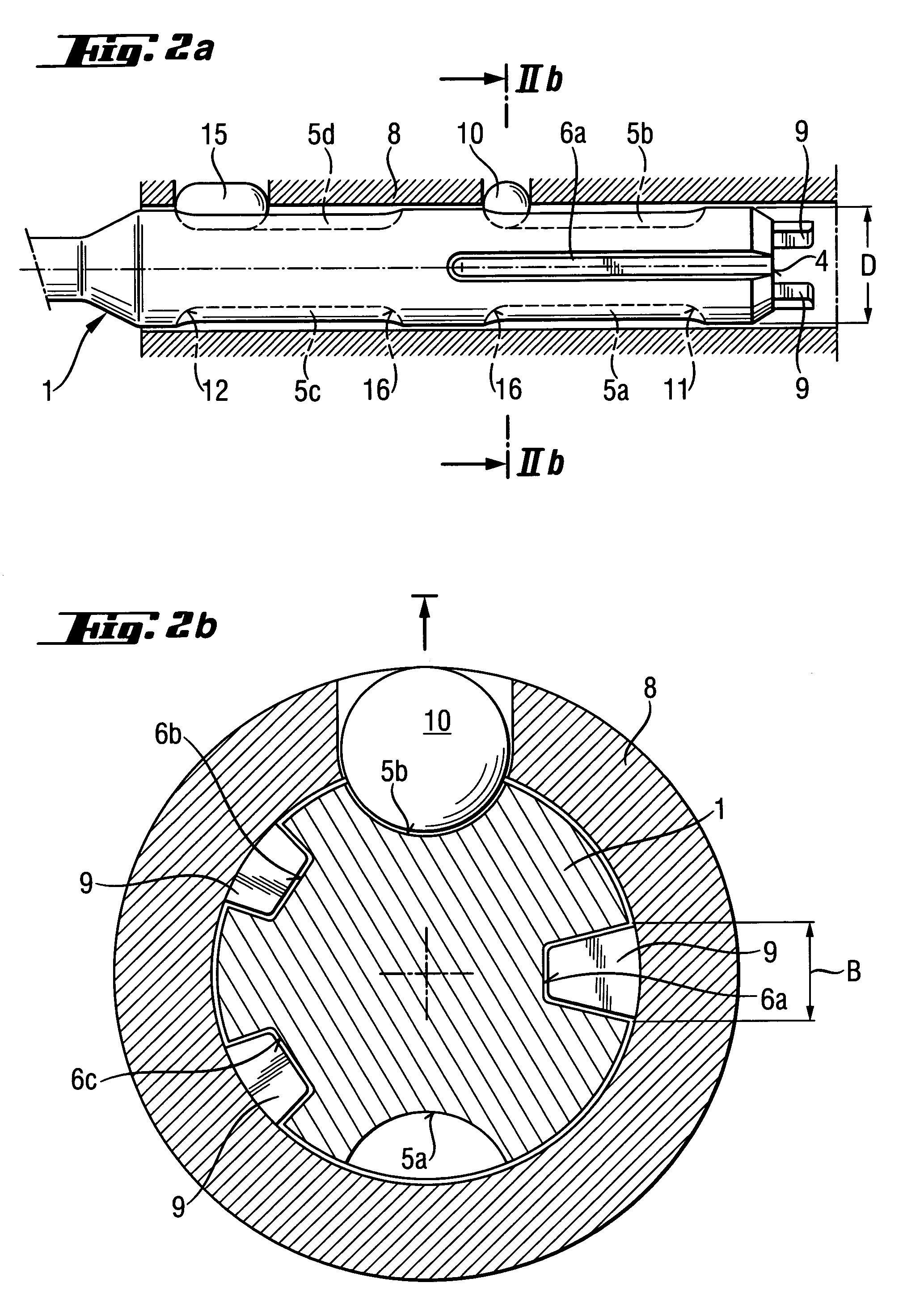Shank for a rotary and/or percussion working tool
a percussion and working tool technology, applied in the direction of portable percussive tools, turning devices, stone-like material working devices, etc., can solve the problems of non-uniform noticeable wear of the chuck, increase the diameter of the drill bit, and damage to the interior of the chuck, so as to reduce the axial displacement of the working tool, and reduce the axial displacement
- Summary
- Abstract
- Description
- Claims
- Application Information
AI Technical Summary
Benefits of technology
Problems solved by technology
Method used
Image
Examples
Embodiment Construction
[0027]FIGS. 1a-1b show a shank 1 according to the present invention of a rotary-percussion working tool 2 rotatable about and displaceable along an axis A. The shank 1 has a twofold rotational symmetry and extends along the axis A, with a maximal guide diameter D. The shank 1 has two identical, arranged diametrically opposite each other, locking grooves 5a, 5b. The locking grooves 5a, 5b are provided at an axial locking end 3 with a locking shoulder 11, respectively, remote from a free end surface 4 of the shank 1. The shank 1 further has two entraining grooves 6a, 6b mutually tangentially offset with respect to the locking grooves 5a, 5b and having a tangential groove width B. The entraining grooves 6a, 6b have each a tangential force application surface 7 extending along a contact length K parallel to and transverse to the axis A. Each of the locking grooves 5a, 5b has, at its working tool side, an end shoulder 12 axially spaced from the respective locking shoulder 11. The end sho...
PUM
| Property | Measurement | Unit |
|---|---|---|
| diameter | aaaaa | aaaaa |
| diameter | aaaaa | aaaaa |
| diameter | aaaaa | aaaaa |
Abstract
Description
Claims
Application Information
 Login to View More
Login to View More - R&D
- Intellectual Property
- Life Sciences
- Materials
- Tech Scout
- Unparalleled Data Quality
- Higher Quality Content
- 60% Fewer Hallucinations
Browse by: Latest US Patents, China's latest patents, Technical Efficacy Thesaurus, Application Domain, Technology Topic, Popular Technical Reports.
© 2025 PatSnap. All rights reserved.Legal|Privacy policy|Modern Slavery Act Transparency Statement|Sitemap|About US| Contact US: help@patsnap.com



